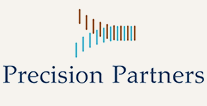Author: Dauwn Parker, Principal Consultant at Precision Partners
Maximizing the benefits of Constituent Relationship Management systems has become critical for organizations that are looking to solidify the long-term viability of their fundraising, advocacy, and advancement programs. This has created an urgency for organizations to find answers to the following question…
Why do so many Constituent Relationship Management (CRM) implementations fall short in the following ways?
-
- Meeting the expectations of its users
- Being the catalyst that transforms how the organization relates to its constituents
- Ushering users into the age of “Self-Service”
- Realizing the Return on Investment
THE CHALLENGE..
These common barriers to success are often the culprit that limit the success of a CRM implementation
Hurdle #1: Defining project objectives and measurable factors for success
With the pressure of developing an RFP, selecting a software vendor, packaging a project proposal and justification for board approval, magically garnering resources that are already overloaded – this critical step is often lost in the shuffle.
Hurdle #2: Implementation Preparation
CRM Implementations are often a new endeavor for an organization and the members of the project team. This often leads to the phenomenon of You Don’t Know What You Don’t Know. This lack of knowledge and preparation can limit project success before it even gets started and in most cases the impact isn’t realized until the project is well underway.
Hurdle #3: Support for Project Leadership
Software implementations are demanding and projects that seek to revolutionize the way an organization interacts with its constituents increases the need for peak performance by the Project Manager. All too often the Project Manager is asked to run the implementation marathon without a coach, proper training, preparation, or continued support.
Hurdle #4: Project Team Performance
Project team members must be fully engaged to become a high performing team. Fully engaged does not equate to a dedicated resource. No matter how much or how little a person is allocated to a project, the following factors must be present for a high performing team to emerge:
- A team identity
- Clearly defined roles, responsibilities, and expectations
- Above all else a commitment to the success of the team
- Continual reinforcement that their contribution is integral to the success of the team
- Recognition and Appreciation
- Personal and professional growth or value in their engagement
Hurdle #5: Project Health Assessments
Project status is most often measured by whether the project is on time, within budget, and the software application is delivered according to the documented specifications. While these are important elements to monitor this does not speak to the overall health of the project. Did the methods used to deliver a quality product on time and within budget cause a loss of trust between project team members or stakeholders, disintegration of cross departmental relationships, or loss of credibility for the project sponsor or sponsoring department? Most organizations would say that any of these negative impacts are not acceptable, but it often happens in projects without a structure for prevention or intervention.
Hurdle #6: Stakeholder Engagement and User Adoption
Many projects manage to engage a core set of team members who develop a solution that they wholeheartedly believe will meet the needs of the organization. It is the biggest threat to morale when after such a strenuous effort, the software application does not meet the most basic needs of some key stakeholders and declared unusable.
If you are currently facing these challenges that are threatening the success of your CRM implementation, Precision Partners Project Advisory Services is your solution.


No comments